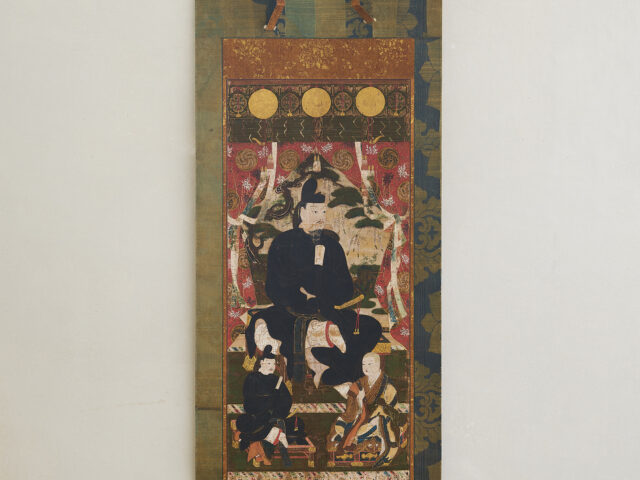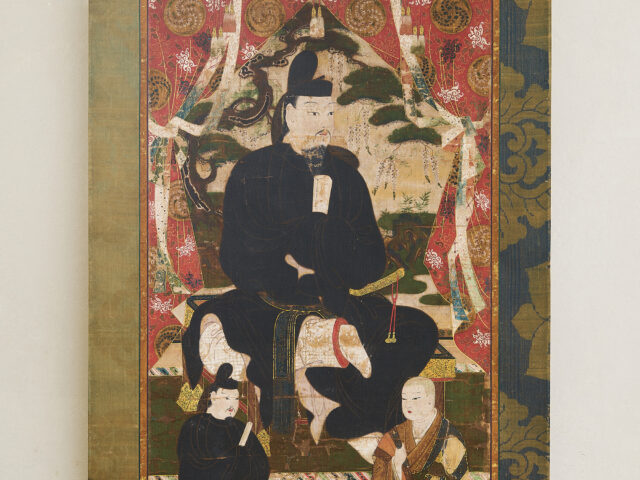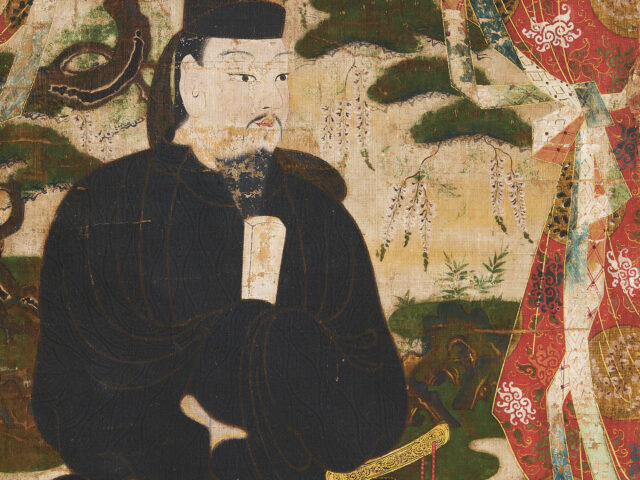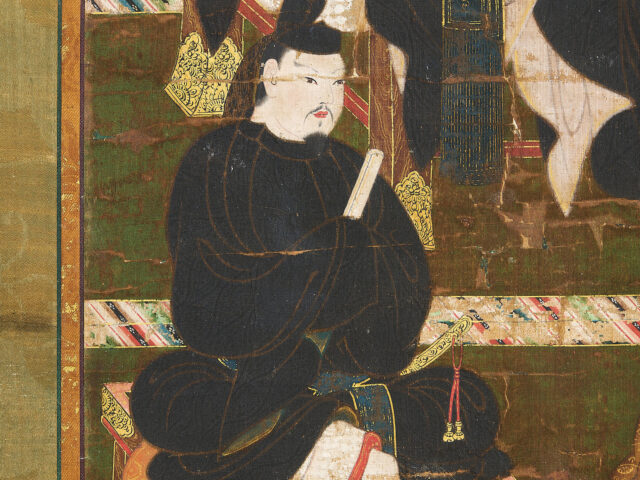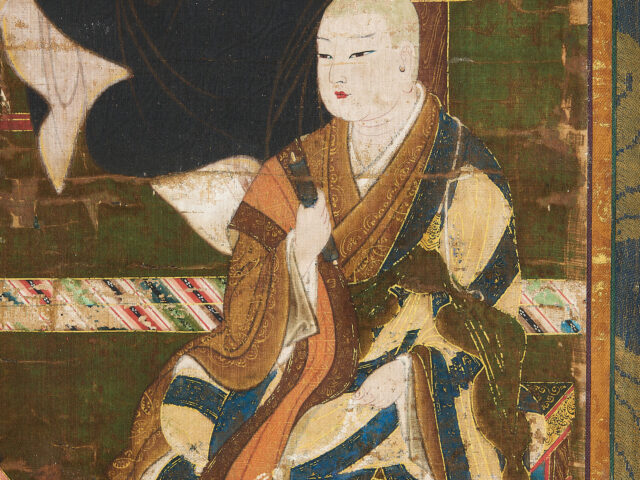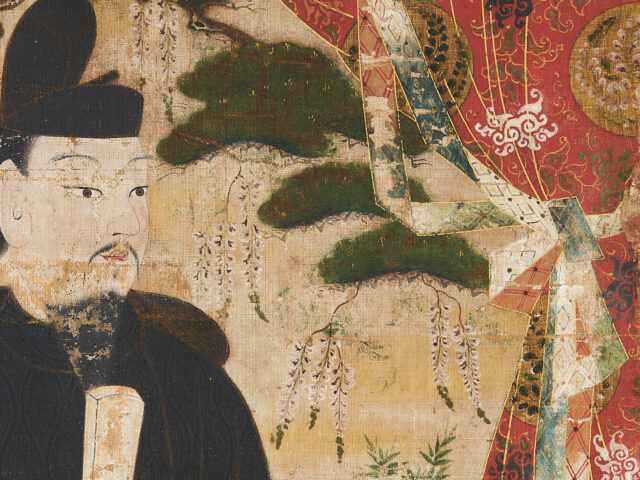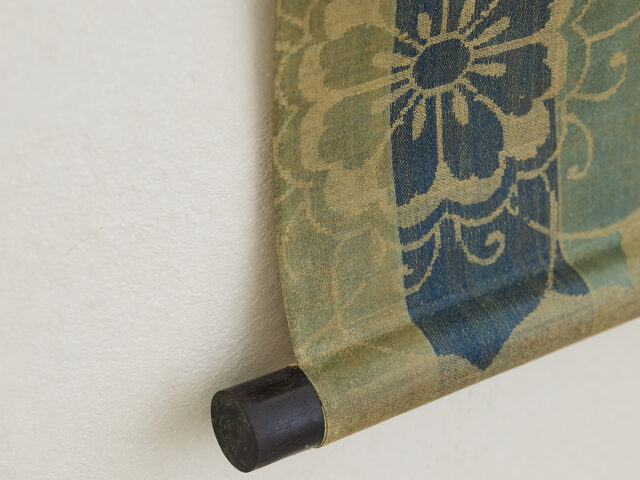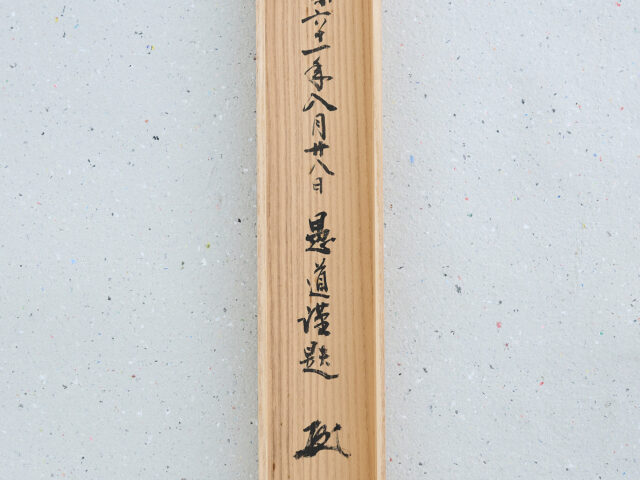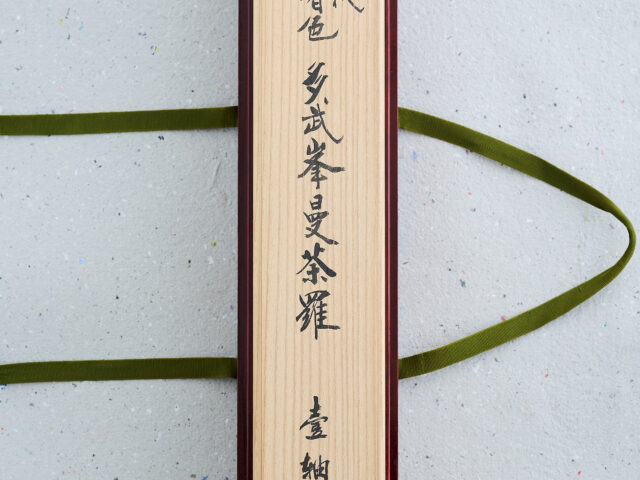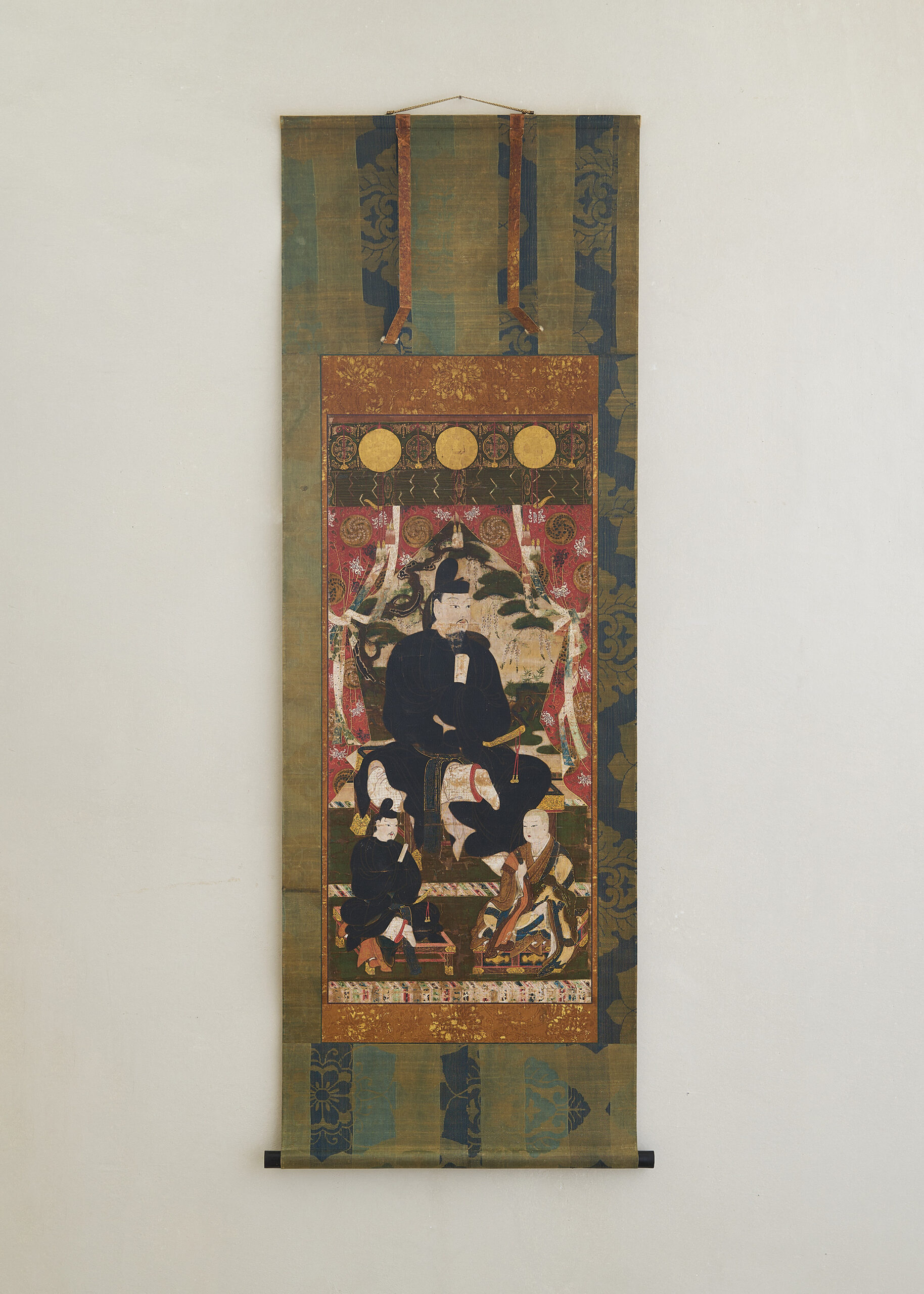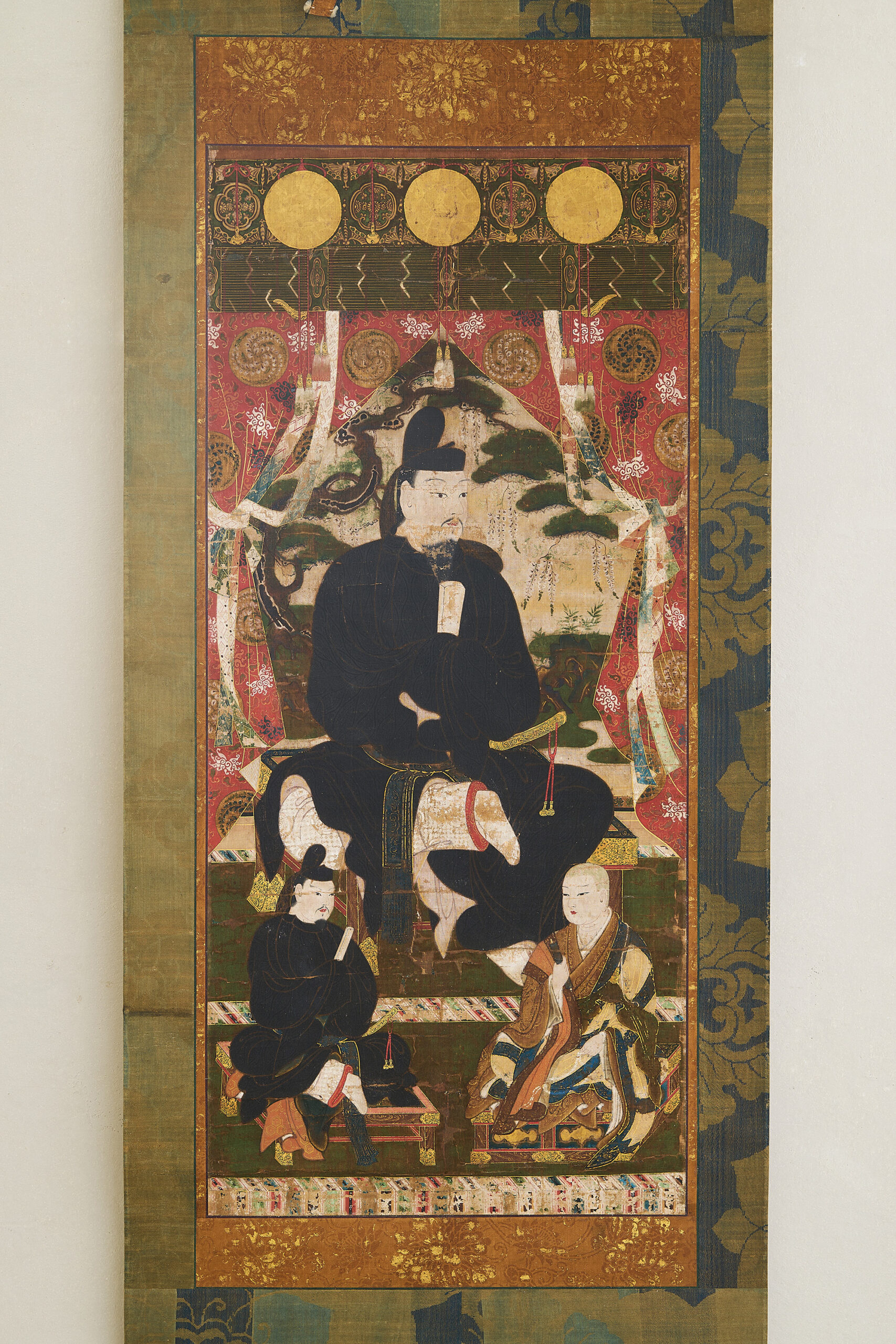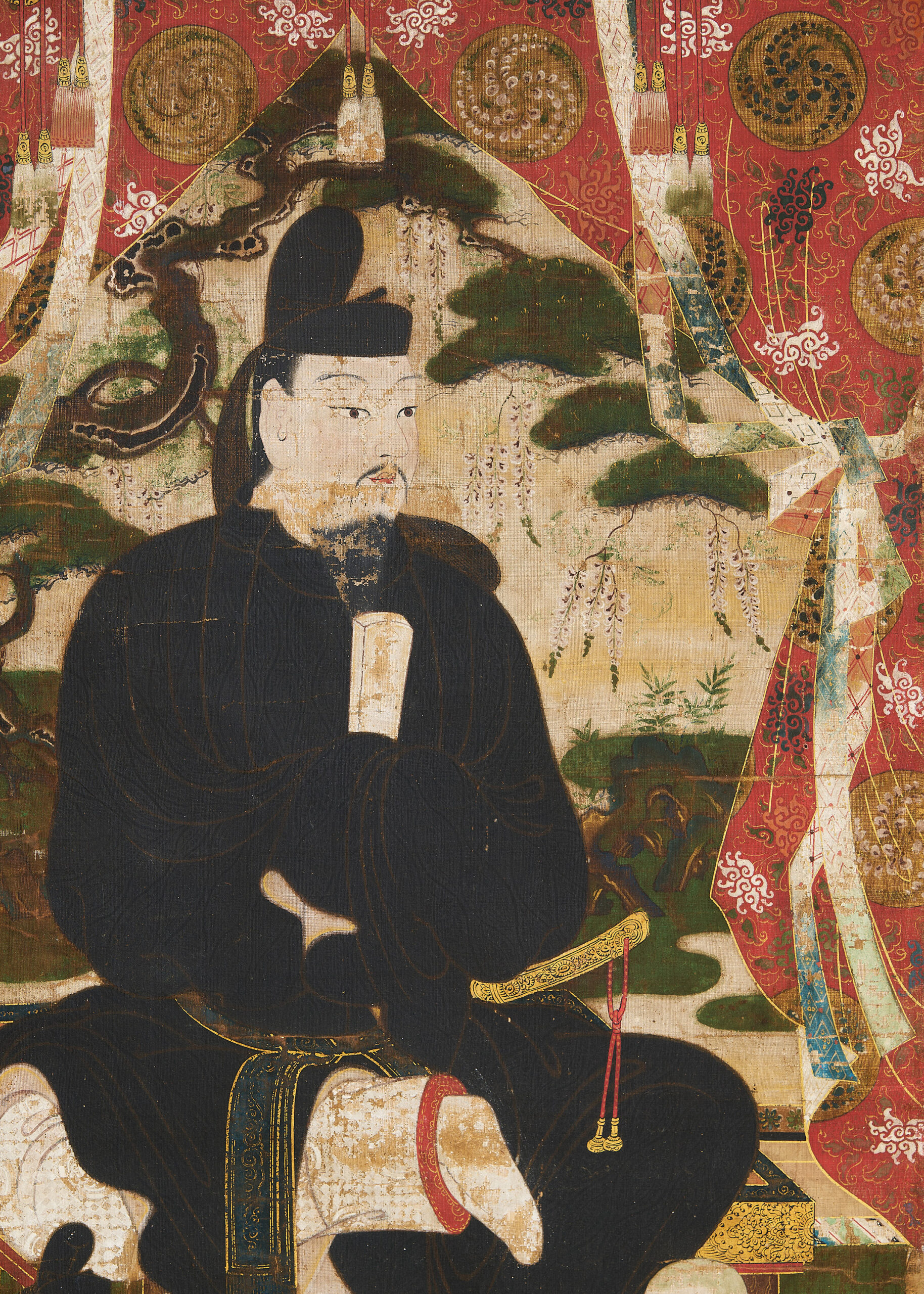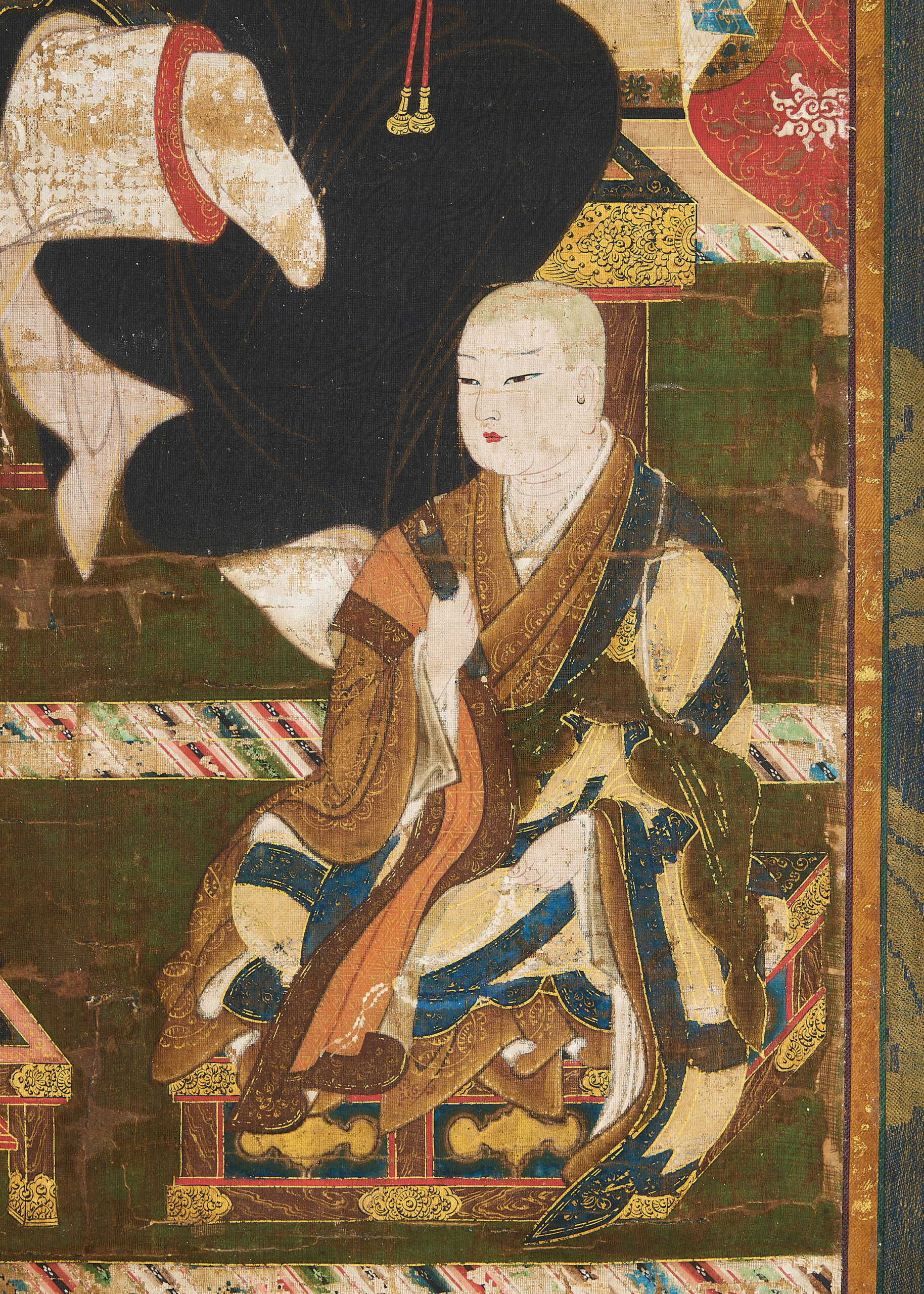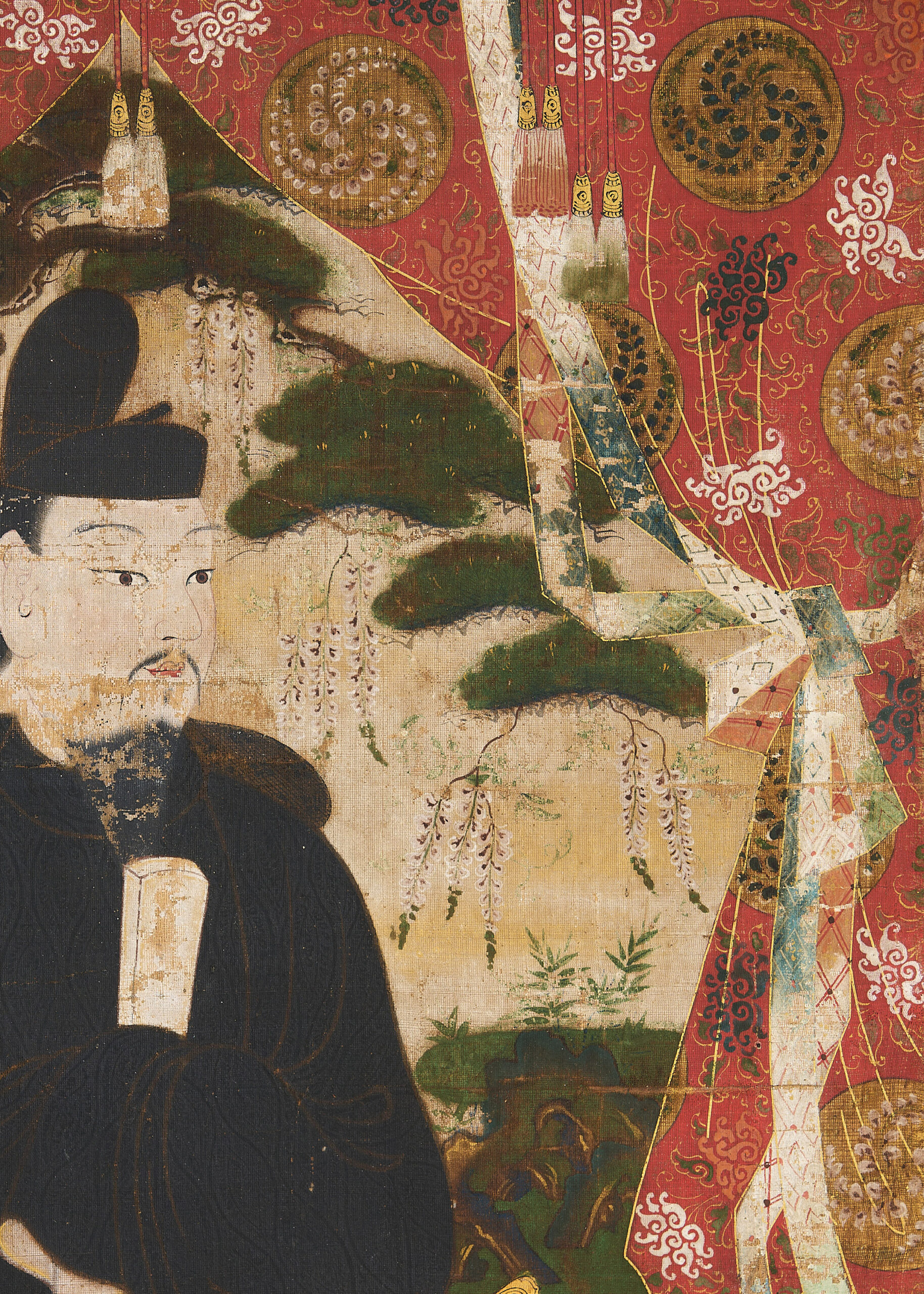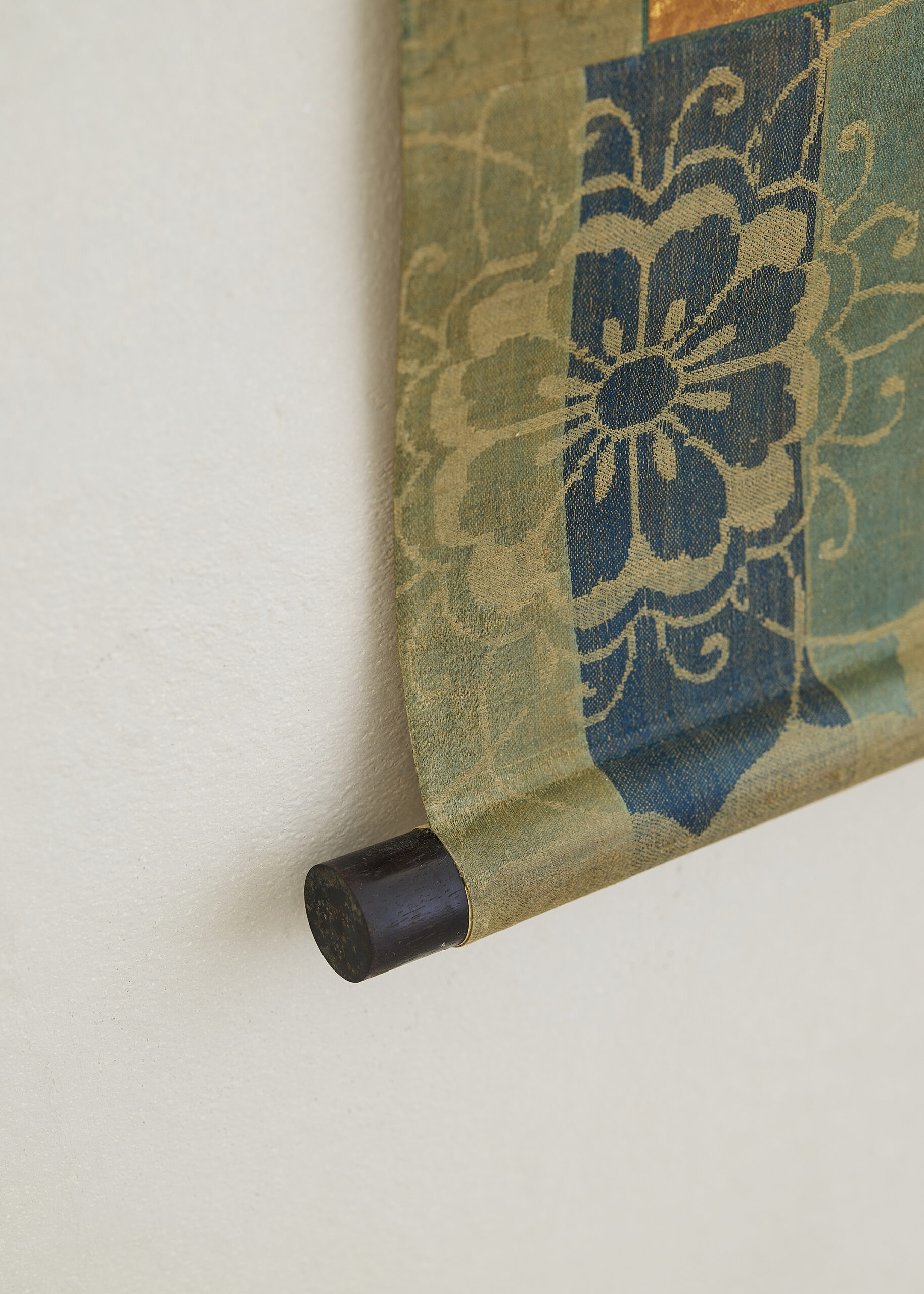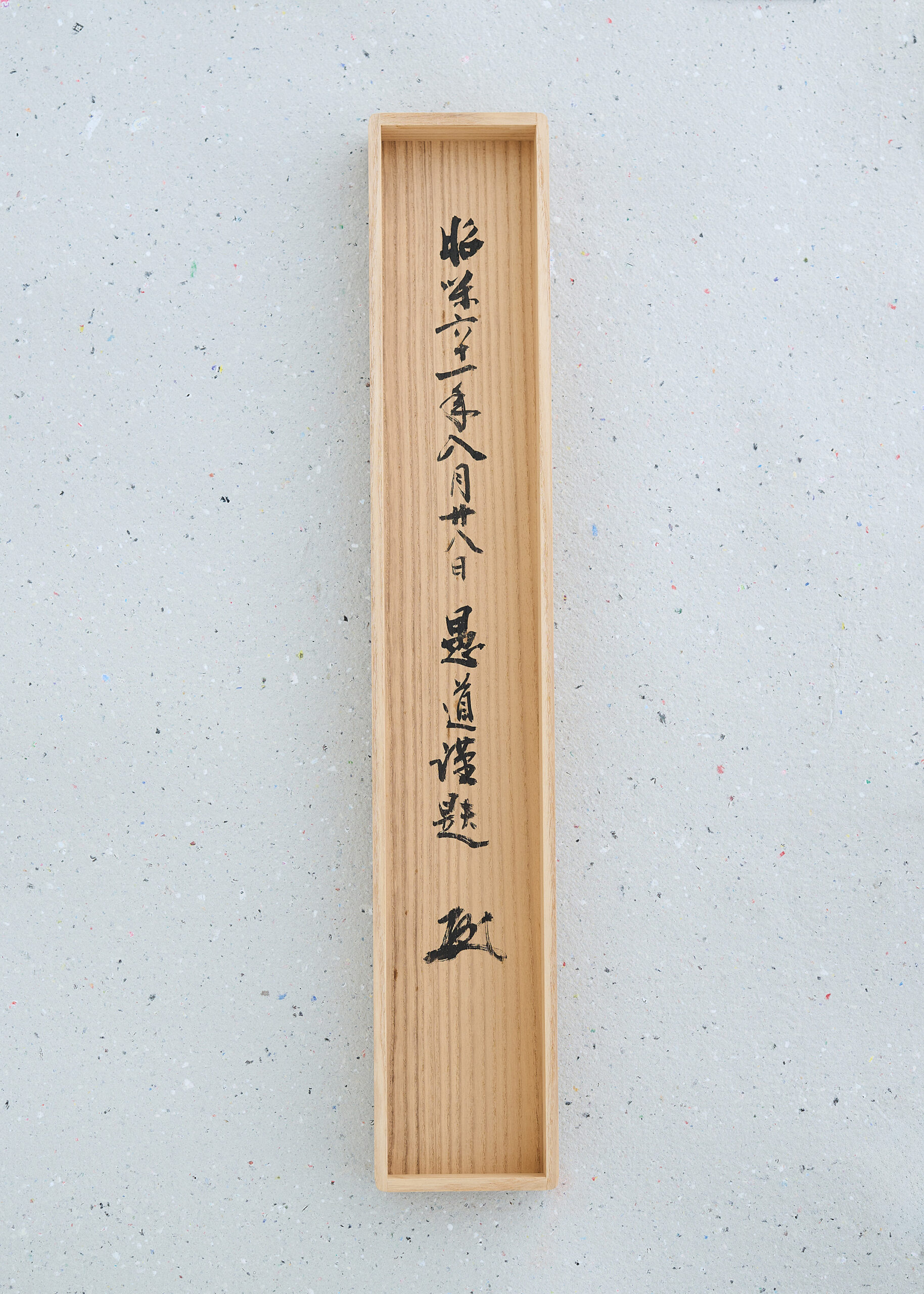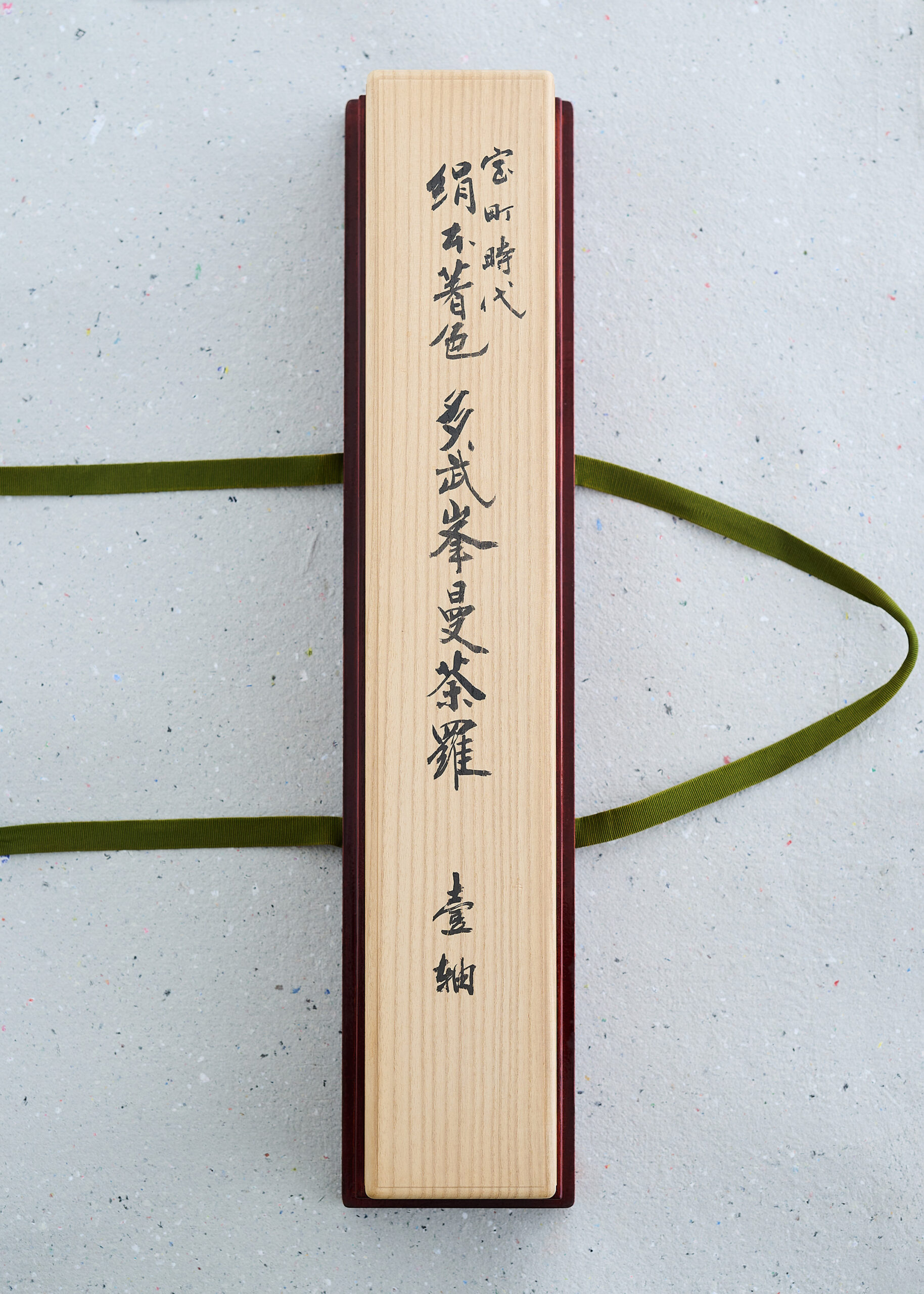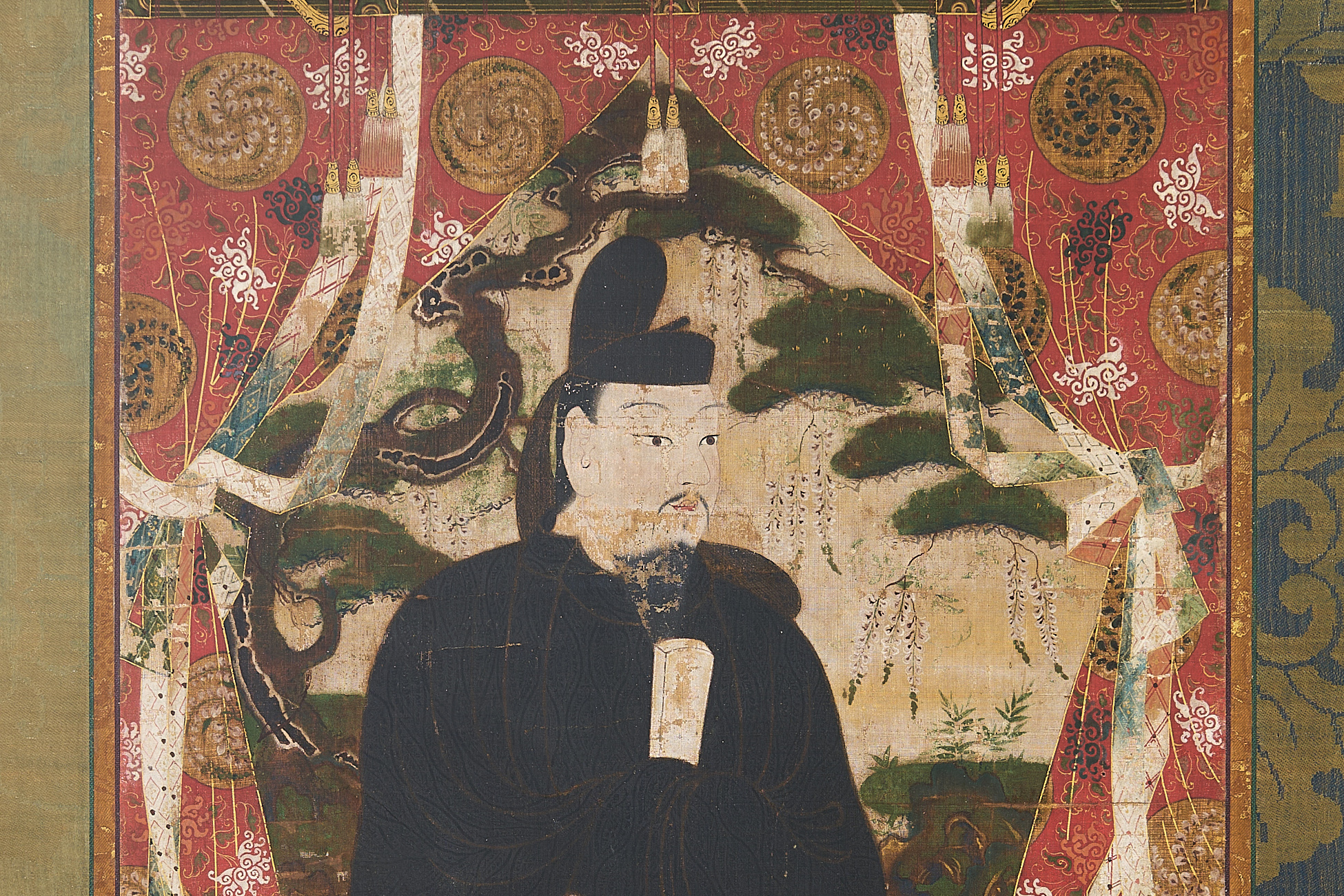
藤原鎌足像
Portrait of Fujiwara no Kamatari
JPY3,500,000Overseas Selling Price
- Period
- Muromachi period (16th century)
- Provenance
- Private collection
- Sizes
- H. 1600mm W. 545mm (w/o shaft ends)
- Accessories
- Double wood box (signed by Dr. Masashi Mitsumori on inner box )
This is a portrait of Fujiwara no Kamatari painted during the Muromachi period. Fujiwara no Kamatari, the deity enshrined at Tanzan Shrine, is in the center of the image. His two sons are below him. His eldest son Joue is on the right and his second son Fuhito is on the left. Above Kamatari’s head are three sacred mirrors representing the Buddhas who first appeared in Japan as deities, Konzoku Nyorai, Manjusri, and Fugen. In the background are intricately painted, weeping wisteria, the shrine’s crest.
It was perhaps only natural that spiritual faith in Nara would shift from Mount Kagu, which has been regarded as sacred since ancient times, to Mount Tonomine, which continues along its ridge. At Tanzan Shrine in Nara, formerly known as Tonomine Myōraku-ji Temple, Kamatari, the ancestor of the Fujiwara clan, was deified in the Tonomine Engi scroll, which was completed around the middle of the Muromachi period. Kamatari’s descendants subsequently commissioned artists of the Nanto-edokoro (*1) to produce triad images such as this one. The majestic presence of Kamatari, the dynamic composition of the image, and the detailed depiction are all truly magnificent. This type of image is one of the Suijaku-e paintings, which are also known as “Tonomine Mandala.”
The tastefully arranged antique cloth mounting matches the image well, lending it elegance and majesty. The inscription on the inner box was written by Masashi Mitsumori (*2), an honorary member of the Nara National Museum. The lacquered outer box and thick scrolls are also carefully appointed.
*1
An organization of Buddhist painters belonging to Kōfukuji Daijō-in and Ichijō-in temples after the Kamakura period. The organization was composed of three schools: Handaza, Shonamiza, and Shibaza, artists who came from Kyoto and settled in Nara.
In addition to producing Buddhist paintings, artists were also involved in coloring Buddhist statues and decorating the interior of temples. Receiving salaries from the temples, artists responded to the demands of each of their branch temples. However, the style of painting did not progress beyond traditional norms and gradually stagnated. During the Muromachi period, Handasukeza was added to the three schools mentioned above, and each school continued to compete for the rights to serve the temples until the early Edo period.
*2
Masashi Mitsumori was born in Amagasaki on May 9, 1931 (Showa 6). In 1964, while enrolled in a doctoral course in the Graduate School of Letters at Ryukoku University, Mitsumori became a Ministry of Education technician in the Crafts Section of the Curatorial Division of Nara National Museum. In July 1965, he was assigned to the Art Section of the Curatorial Division, where he specialized in sculpture until his retirement. In November 1972, he became head of the Public Relations Section of the Curatorial Division, and in April 1977, he became head of the Art Section of the Curatorial Division. In 1987, he took charge of the Buddhist Art Research Section of the Buddhist Art Materials Research Center at Nara National Museum. In April 1991, he became head of the Curatorial Division, and in March 1993, he retired from the museum after serving in this final position. In May of the same year, he became an honorary member of Nara National Museum.
Strongly influenced by the archaeologist Shigesaku Ishida, who was his mentor since his days as a student, Mitsumori maintained an attitude of looking at Buddhist art not merely as the subject of desk or classroom-bound research, but as something that exists in the context of the original practice of Buddhist rituals. Consequently, Mitsumori made many unique contributions to research on Amida Buddha and Buddhist crafts and curated many exhibitions at Nara National Museum over the span of his 30 year career.
Mitsumori’s major works include Amida Buddha Sculptures (Tokyo Bijutsu), Amida Crossing the Mountains (Dohosha Publishing), Hidden Buddhas in Hidden Temples along the Yamato Road (Kodansha), Japanese Art 241: Amitabha Statues (Shibundo), Basic Knowledge for Appreciating Buddhist Sculptures (co-authored/Shibundo), and Discussions on Buddhist Art (Hozokan).
(Excerpted from the 2000 edition of the Japanese Art Yearbook (page 254))






